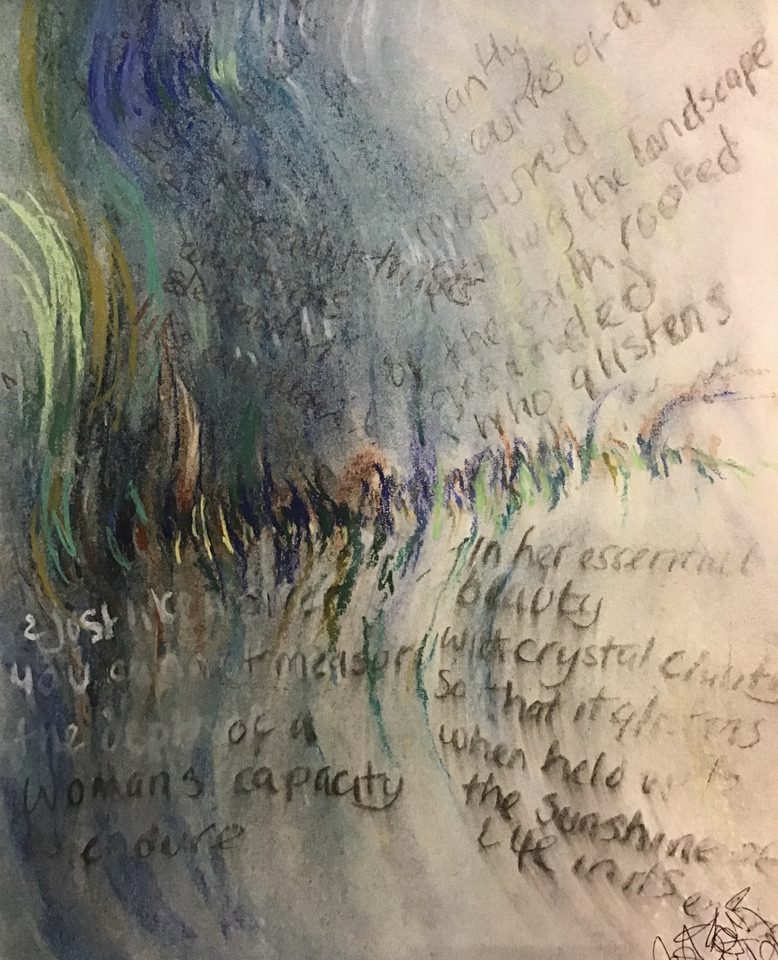Monday Moments: Fantastical Nature
Introduced By Holly King

In this Monday Moments, we are focussing on how writers and artists take the theme of nature and inject fantasy into it. Art, I believe, is our way of trying to communicate and connect: to each other, to ourselves, and to our world. By making nature fantastical, by giving trees the power to walk, or flowers the power to sing, and vampires the ability to turn into bats, we are more related to the natural world, and can better communicate stories about us, in relation to the Earth.
So, this month, I’ve collected some fantastic features all based on this theme, celebrating fantasy and transforming nature into something a little more human.
First up, is a poem and accompanying illustration: the words of the poem becoming part of the art. The creator, Iesha Denise, delves a little deeper into how we can view a river:
A River
They say a river
Flows
Runs
But does it
No
Instead it twists and turns
Elegantly
Like the curves of a woman
Matured
Which hug the landscape
Of the earth rooted grounded
Who glimmers in her
Essential beauty
With such crystal clarity
That it glistens
When held up to the sunshine
Of life
In all of its entirety
And just like a river
You cannot measure
The depth
Of a woman’s capacity
To endure
© Iesha Denise, 2021
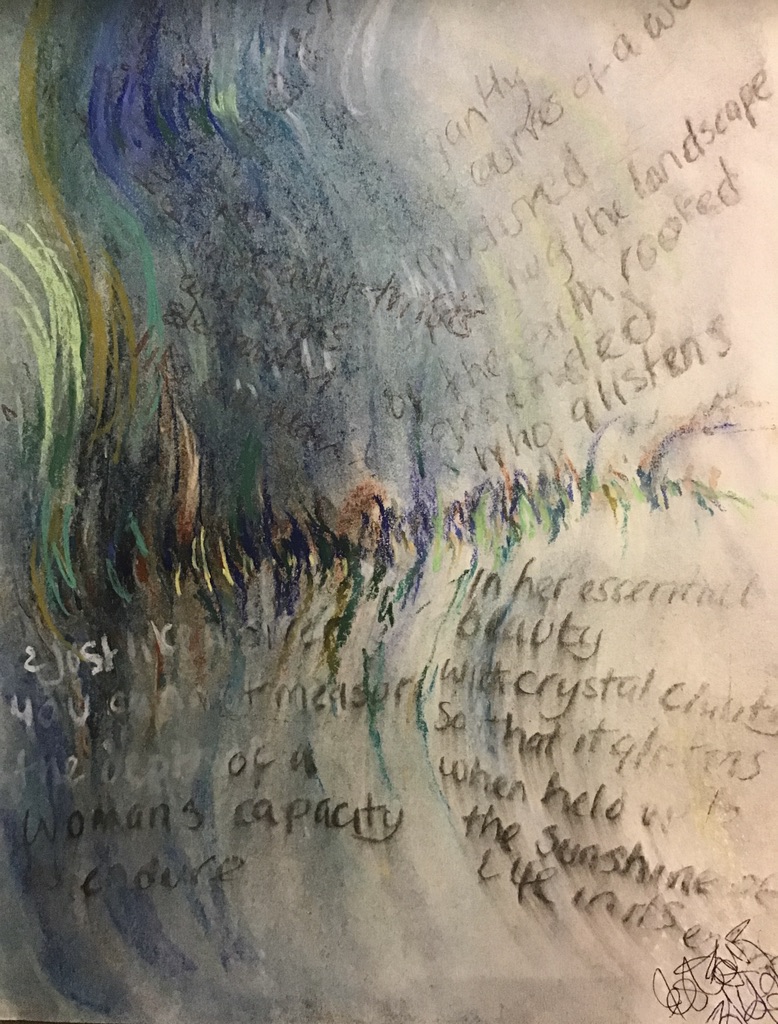
*****
Next, fantasy author Robert Clarke tells us about how he transforms nature in his writing:
Whenever it comes to the concept of creativity and imagination, I feel the most important part of it is a collective experience. For me, it’s shaping a new world into words, coming from the experience of what we’ve seen, or felt. Writing is, after all, a form of expression, which for many is how creativity is born.
A common name I stick to using for myself is Phoenix: not just for my love of the mythical creature, but because it symbolises my stubbornness for never giving up. No matter how much life pushes you down, you will always have the strength to stand up, becoming stronger. For me, that is how I take a natural thing and turn it into something fantastical.
I find topics I have no experience with, and little knowledge for, the hardest to write. It feels generic and empty, which is then conveyed in the writing. Those are things I consider the most important for creativity and imagination. But also, even without those, a big factor in them all is heart.
© Robert Clarke, 2022
Check out Robert’s books on Amazon: https://www.amazon.com/Robert-M.-Clarke/e/B0762MX88Q
*****
Now, we bring fantasy to your ears through the Alternative Stories podcast Through The Trees.
https://www.buzzsprout.com/411730/4504331-through-the-trees-part-1
© Alternative Stories And Fake Realities, 2022
Alternative Stories And Fake Realities is a literary podcast producing audio drama, fiction and poetry and sharing interviews with writers and writing advice and inspiration. Alternative Stories dramas have been heard on BBC Radio and on overseas broadcast services and have represented the United Kingdom at the International Radio Drama Festival for the last two years. Alternative Stories was runner-up in the ‘Best Arts Podcast’ category at the Discover Pods Awards in 2021 and has been nominated for numerous AudioVerse awards.
*****
Here is an illustration from TAK Erzinger called Sacred Place.
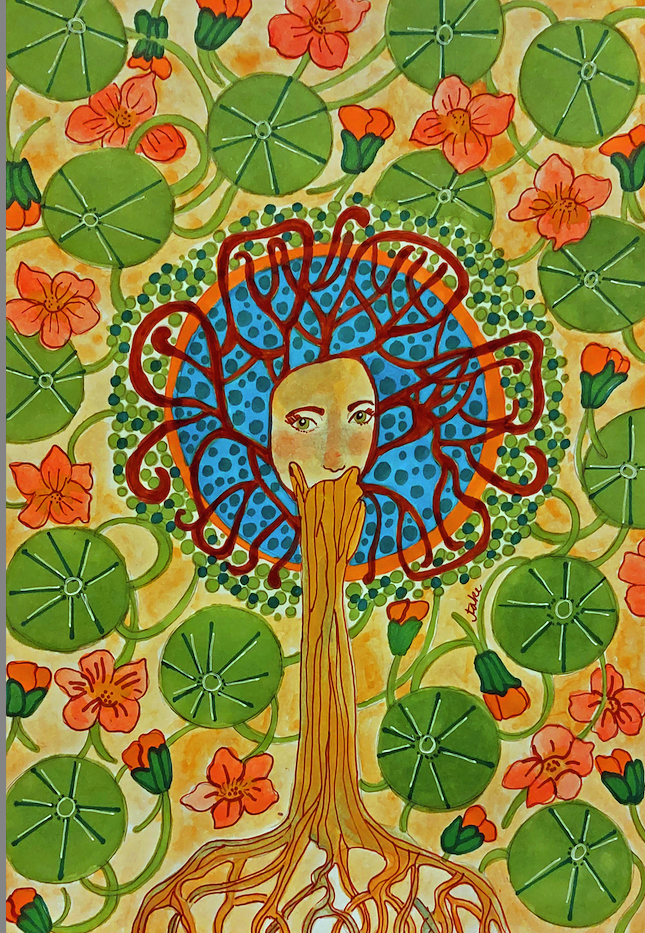
TAK tells us:
I live in a rural area next to a forest, and nature has a big influence on my art and writing. For this illustration, I drew on the influence of art nouveau, an artistic style I’ve admired since I was first exposed to it as a child. The idea of art nouveau was to focus on bringing nature back to modern life. As it is for myself, the natural world was a central inspiration for art nouveau. Moreover, I find nature to be more balanced than our current modern world. In my illustration, I use the symmetry of the circular Nasturtium leaves in harmony with the round shape of the treetop, to create the illusion of balance. The woman’s face in the tree is a nod to the sacred feminine, a concept that suggests God is neither male nor female, but a divine essence balanced with both.
© TAK Erzinger, 2022
*****
Now for a short story from Tavinder New, where the protagonist merges with nature:
Man In The Mirror
My arms are all hairy, my teeth jagged like a saw, and I investigate the mirror and see a beast staring at me. It’s not me in the mirror, but something else. Eyes as dark as a cloak stare with anger within them.
October. The weather has turned to cold, rain and dampness, as I turn into this creature. Near Halloween, I become this thing that is not me, driven into the wild for basic needs. I want to run free into nature; my claws grab the dirt as a child with love. It is how I feel joy within, the bosom of nature as I sing at the moon, praising its beauty.
I am thought of as a myth, something from stories, a fantasy, but I am real, because I change in October for Halloween. It’s a metamorphosis for my body: crunching, munching and hunching into this animal. It’s my secret that I hold close, something that I cannot reveal, this ability to change.
I tear away from the shackles of human demands, work, priority and stresses of life, into the wild, to be free within nature. I feel the beauty of the rain. It is a curse but also a gift to be this free. I am protected by nature’s beauty as it looks after me.
Then reality comes in November, as I turn back into a human to the grind, the hamster’s wheel, to responsibility. I look at the mirror and see myself. There is a tear in my eye. I miss the freedom of being a werewolf.
© Tavinder New, 2021
Connect with Tavinder: https://wordpress.com/view/tavindernew.wordpress.com and on Twitter: @NewTavinder
*****
Deputy Editor Claire Buss shares a couple of extracts from her humorous fantasy Roshaven books:
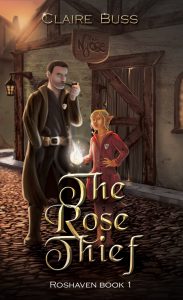 Willow was thorny. She knew they were going into a battle of sorts, so she had tapped into every plant-based protection system she could think of. She had new poison sacs growing on the insides of her wrist, perfect for throwing globules of the stuff out at the unsuspecting – not so good for accidentally dripping into your tea. Her skin had grown exceedingly waxy which was making her feel hot, but no one would be able to damage her dermis. She had thorns positioned strategically all over her body, wherever a person might try to get a handhold. It was a singular image.
Willow was thorny. She knew they were going into a battle of sorts, so she had tapped into every plant-based protection system she could think of. She had new poison sacs growing on the insides of her wrist, perfect for throwing globules of the stuff out at the unsuspecting – not so good for accidentally dripping into your tea. Her skin had grown exceedingly waxy which was making her feel hot, but no one would be able to damage her dermis. She had thorns positioned strategically all over her body, wherever a person might try to get a handhold. It was a singular image.
(c) Claire Buss, The Rose Thief, 2019, description of Willow the tree nymph.
Ned hadn’t been listening. He was window-watching, wondering what on earth a lemon coach looked like. 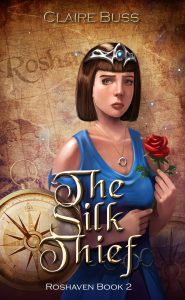
When a giant lemon rolled down the street on huge golden wheels, he had his answer. He was about to hurry out the door when he remembered the fork, so he dashed back inside and the lemon was about to roll away as he grabbed the door handle sticking out the pith.
‘Ya late.’
‘I forgot the fork.’ Ned looked around in interest as he got in. The inside of the lemon gave the impression of being juicy with almost bouncy seats and an intense citrus aroma, but everything was held in place by Momma K’s magic. There was no way anyone would be juicing this fruit. ‘This is amazing.’
© Claire Buss, The Silk Thief, 2021, description of Momma K’s lemon coach.
You can connect with Claire and buy her books here: https://linktr.ee/ClaireBuss
*****
Lastly, we hear from Michelle Sutton of L.M. Towton, who tells us how nature inspired the great fantasy writer, J. R. R. Tolkien:
Our natural world has always inspired creatives. From the earliest mythologies to the latest bestseller, it’s possible to find some element that has been taken from nature. Fantasy and science fiction writers are very good at this, in my opinion, as are many horror ones. Just think about the races and ‘monsters’ they create, or the wildlife and worlds within. One of my favourite examples of a ‘monster’ inspired by the natural world is the xenomorph from Alien, as each individual life stage of it can be attributed to different real animals, such as horseshoe crabs and the facehuggers; or the second jaw that shoots out from the mouth (pharyngeal jaws). I recommend googling ‘goblin shark bite’ – you’ll be amazed – and, possibly, disturbed?
Then there’s how nature has inspired entire fictional worlds. I’m sure we can all think of at least one example: The Faraway Tree, Narnia, The 100-Acre Wood are just a few; but the one I always think of is Middle-earth.
Tolkien, as a philologist, initially wanted to create a mythology for England (as opposed to being borrowed from French or Welsh traditions), filled with stories that would explain many old words that had come into modern usage without explanation. This would begin in The Book Of Lost Tales, which Tolkien never completed, and abandoned, but several years later, he wrote two long poems (lays) in which, although using elements from The Book Of Lost Tales, the landscape of their worlds had become more fantastical.
By the time of The Hobbit and The Lord Of The Rings, Tolkien’s descriptions of Middle-earth were fully-fledged and the inspiration from nature clear: in particular, forests and trees and their importance within the world. The forests of Mirkwood, Lothlórien, Fangorn and the Old Forest were probably all influenced by Puzzlewood, an ancient woodland in the Forest of Dean. Alan Lee used Puzzlewood to create many of his watercolours in the illustrated editions of The Lord Of The Rings. Tolkien even created an entire tree-like race, the Ents, who were shepherds of Fangorn Forest.
There is something about ancient woodland that conjures inspiration. The unique atmosphere you feel when within their depths is hard to explain, but it’s as though you’ve entered an entirely different world; unsurprising, when you’re surrounded by trees that are hundreds of years old. Every time I go for a walk through any ancient wood, I always find myself creating something in my head. Years ago, while walking through Hainault Forest, I created an entire land complete with a sketched-out map. I still have the sketch and it’s expanded since, becoming a world called, for now, The Four Quarters – with each ‘Quarter’ being inspired by a different habitat, with their own micro-climates and biodiversity, and even one devoid of them. One day, I’ll write its story.
Nature has always inspired us. Even if you think it hasn’t, take a closer look – there will be something, I promise you!
© Michelle Sutton, 2022
Connect with Michelle on Twitter: @LM_Towton
Don’t forget to submit your work to us via pentoprint@lbbd.gov.uk. You can read our latest issue of Write On! Magazine here.
By making nature fantastical, by giving trees the power to walk, or flowers the power to sing, and vampires the ability to turn into bats, we are more related to the natural world, and can better communicate stories about us, in relation to the Earth.


